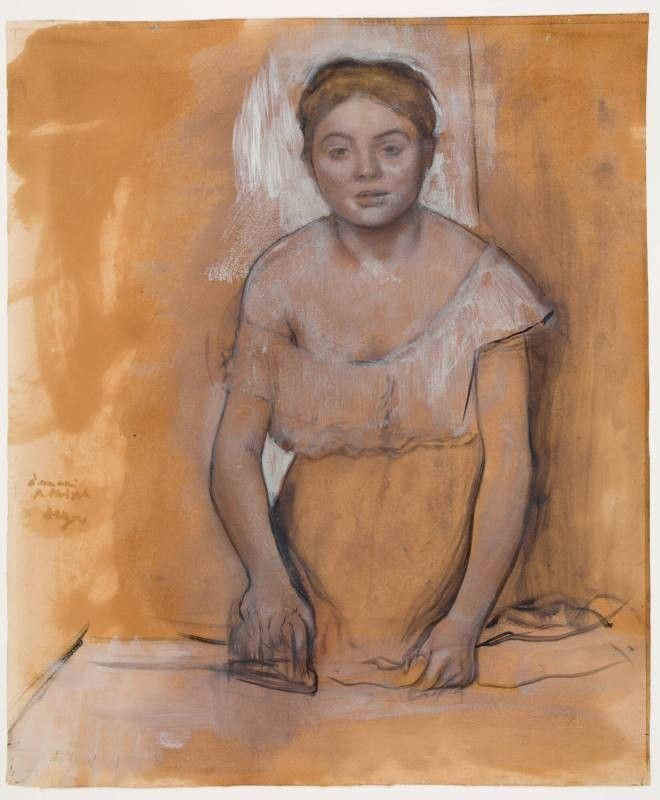ABOUT THE EXHIBITION
 Edgar Degas, The Laundress, c. 1869–75, oil and gouache on paper. Davis Museum at Wellesley College, gift of Anne Cohen Heller (Class of 1941) in memory of Nellie Zuckerman Cohen (Class of 1912) and William B. Heller, 1991.56
Edgar Degas, The Laundress, c. 1869–75, oil and gouache on paper. Davis Museum at Wellesley College, gift of Anne Cohen Heller (Class of 1941) in memory of Nellie Zuckerman Cohen (Class of 1912) and William B. Heller, 1991.56Edgar Degas (1834–1917), described by a close friend as “an artisan passionate about all the means of his art,” worked for much of his career with an unusually wide array of media and processes. A close examination of his art making reveals what one critic called Degas’s “restless searches for new procedures.” He emerges as one of the most technically innovative artists of his time through his experimentation with varied printmaking techniques, his distinctive treatment of pastel, and his frequent combinations of multiple media.
This year marks the 150th anniversary of the inaugural Impressionist exhibition in 1874, a watershed moment in the history of modern art. Degas had a central but complicated position in the eight Impressionist exhibitions held between 1874 and 1886. While he had a pivotal role in shaping them by inviting many artists to participate, he also criticized some of the key Impressionist precepts and practices, such as working en plein air (outdoors in front of the motif).
Degas was friendly with many artists who exhibited in the Impressionist shows at his invitation, such as Henri Rouart, Marcellin Desboutin, Ludovic Lepic, and Georges Jeanniot. Some of them shared Degas’s passion for innovative methods of making and thus help us to develop a richer and more nuanced view of his artistic practice.
Drawn from the Clark’s outstanding collection of works by Degas and supplemented by select loans, this exhibition seeks to convey the artist’s remarkably experimental approach, his important role in shaping the Impressionist exhibitions, and at the same time his aversion towards some of the key Impressionists’ working practices.
Edgar Degas: Multi-Media Artist in the Age of Impressionism is on view in the Eugene V. Thaw Gallery for Works on Paper in the Manton Research Center.
Edgar Degas: Multi-Media Artist in the Age of Impressionism is organized by the Clark Art Institute and curated by Michelle Foa, Associate Professor of Art History at Tulane University and Florence Gould Foundation Fellow at the Clark in spring 2024 and Anne Leonard, Manton Curator of Prints, Drawings, and Photographs.
Generous support for this exhibition is provided by the Malcolm Hewitt Wiener Foundation.
